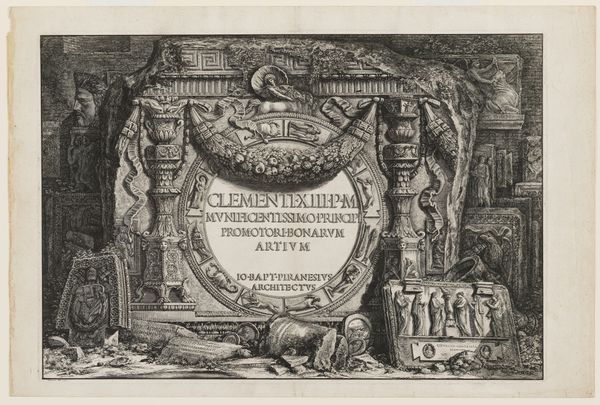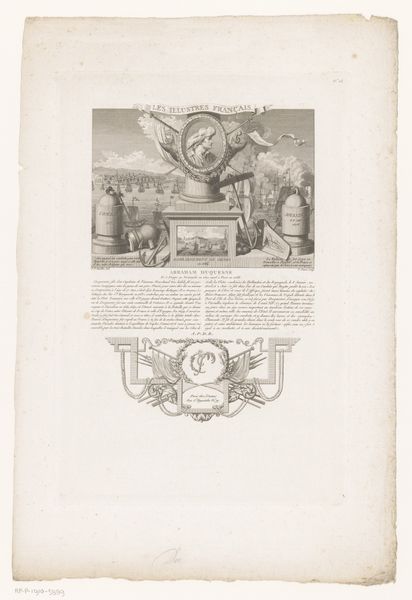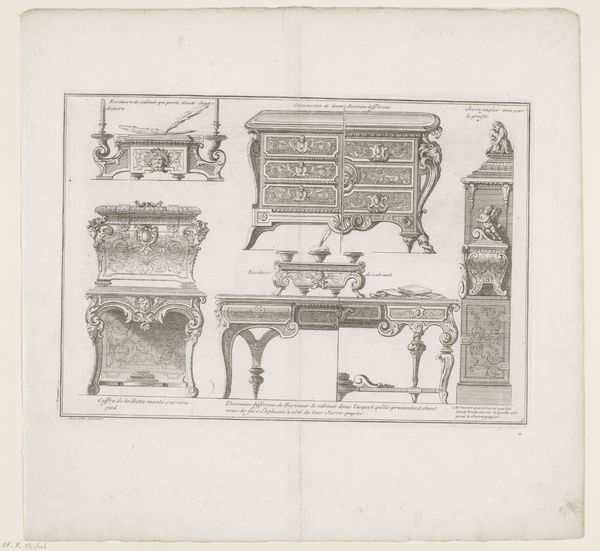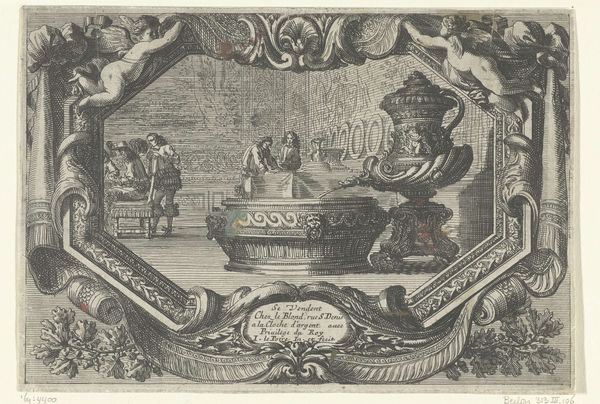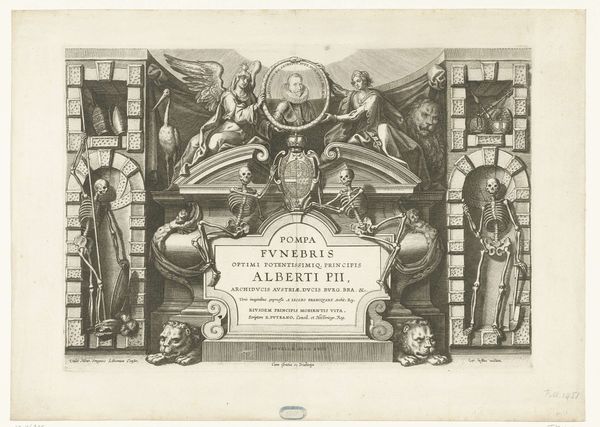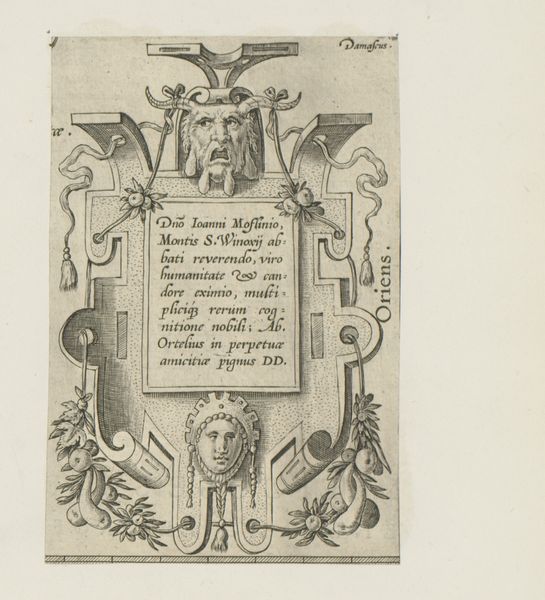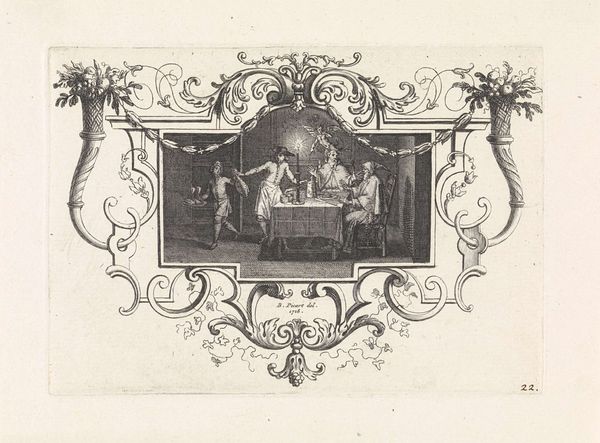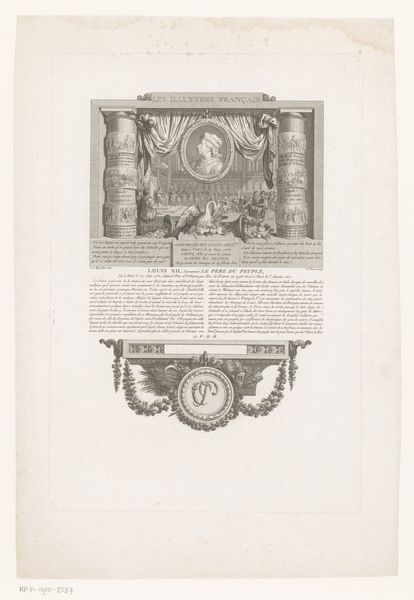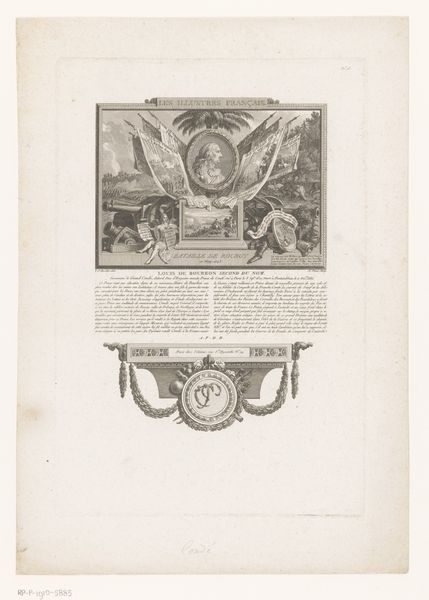
Frontispice met een groep ornamentele wandfragmenten 1764
0:00
0:00
Dimensions: height 459 mm, width 661 mm
Copyright: Rijks Museum: Open Domain
Curator: Looking at this, my initial reaction is one of intricate density; the visual field is absolutely packed. Editor: Indeed. What we're seeing here is Giovanni Battista Piranesi's "Frontispice met een groep ornamentele wandfragmenten," created around 1764. It’s currently held here at the Rijksmuseum. Piranesi was, of course, renowned for his etchings and engravings of Roman architecture and this piece exemplifies his skill. Curator: I am immediately drawn to the contrast between the formal elements, the clean lettering within the central cartouche, and then the wild, almost chaotic assemblage of ruins surrounding it. It's as if the ordered world of language is constantly threatened by the disorder of history. Editor: Exactly. The baroque style here emphasizes drama and grandeur but simultaneously presents a layered commentary on power, patronage and classical antiquity. This was made in honor of Pope Clement XIII who supported the arts and we see him being championed within. Curator: Considering its place and period of production, the composition reflects complex hierarchies embedded within religious and political authority. It acknowledges the papal figure’s impact, but this acknowledgment becomes mediated by Piranesi's own architectural fantasias. Editor: Notice also how Piranesi uses light and shadow. The textures within the architectural remnants and fragments are created through highly detailed ink work which enlivens the entire piece. His strategic hatching adds definition, calling our attention to specific forms over others. Curator: I see that also reflecting ideas around social progress: Enlightenment-era thought grappling with legacies of cultural and political dominance. Does the art celebrate an empire or dissect it through imagined reconstructions of crumbling monuments? It’s almost as though ruins represent freedom from previous regimes. Editor: Precisely. Its powerful tension exists between commemorating historical precedent and questioning its relevance in rapidly changing times. The details and materials such as the etching on paper really emphasize those ideas about a culture facing changes and fragmentation of traditions and authority. Curator: I agree entirely; seeing these scattered classical remnants evokes for me today ideas regarding displacement, deconstruction and historical memory itself, making this piece feel unexpectedly resonant. Editor: And for me, the dialogue between line and form highlights the artist's technical virtuosity but also reinforces themes of impermanence, urging a sustained look at material legacies and human influence on shaping historical and cultural meaning.
Comments
No comments
Be the first to comment and join the conversation on the ultimate creative platform.
